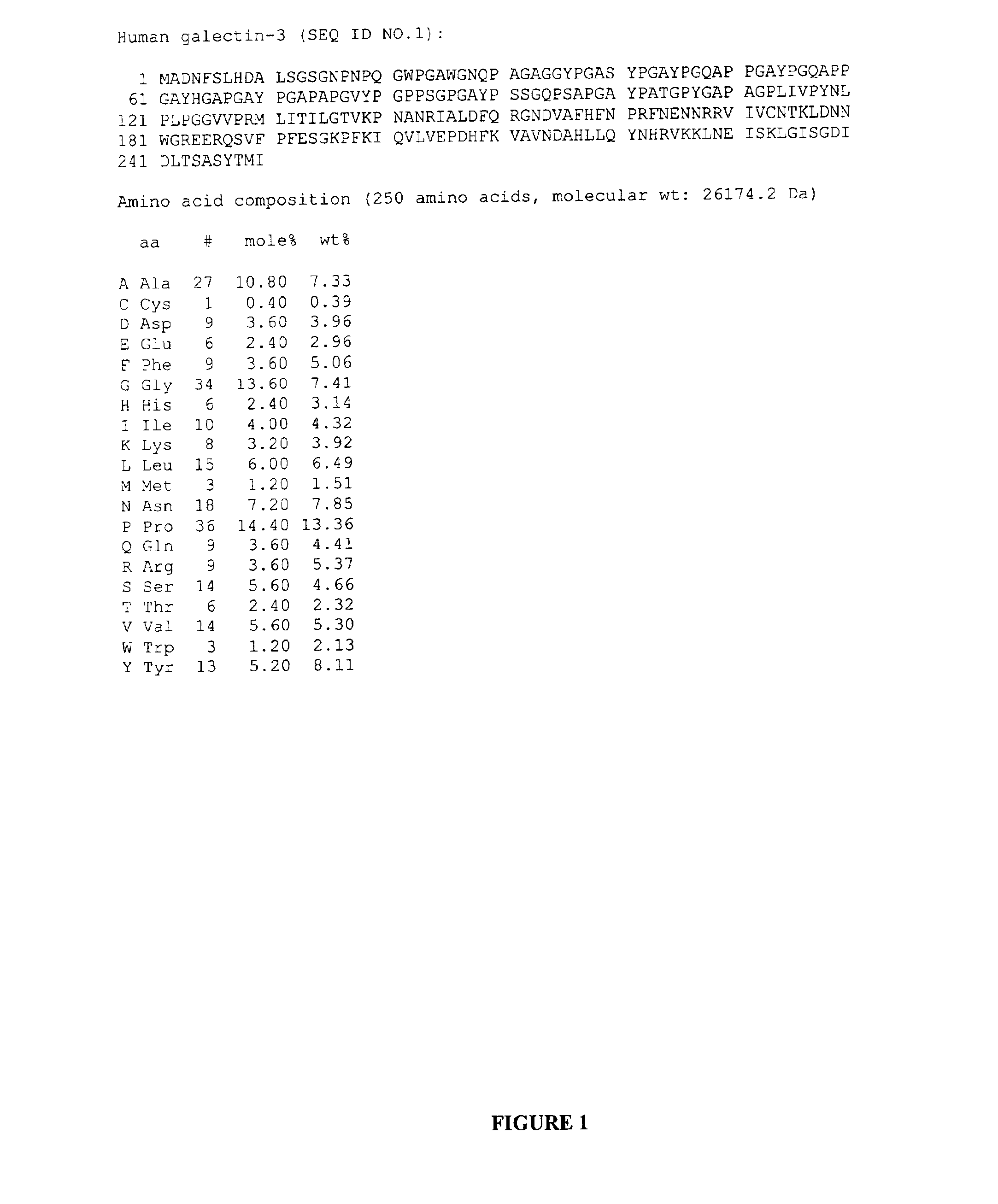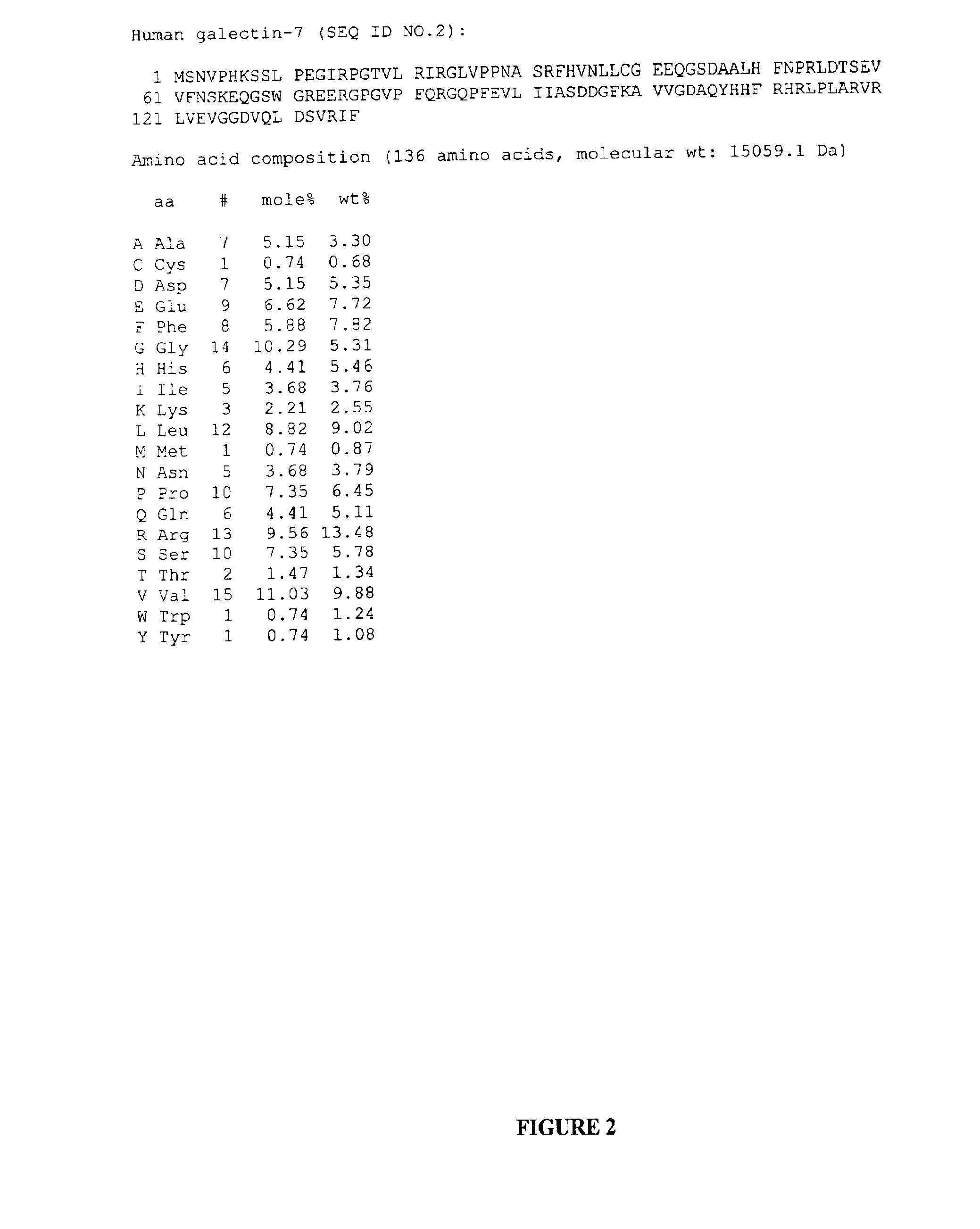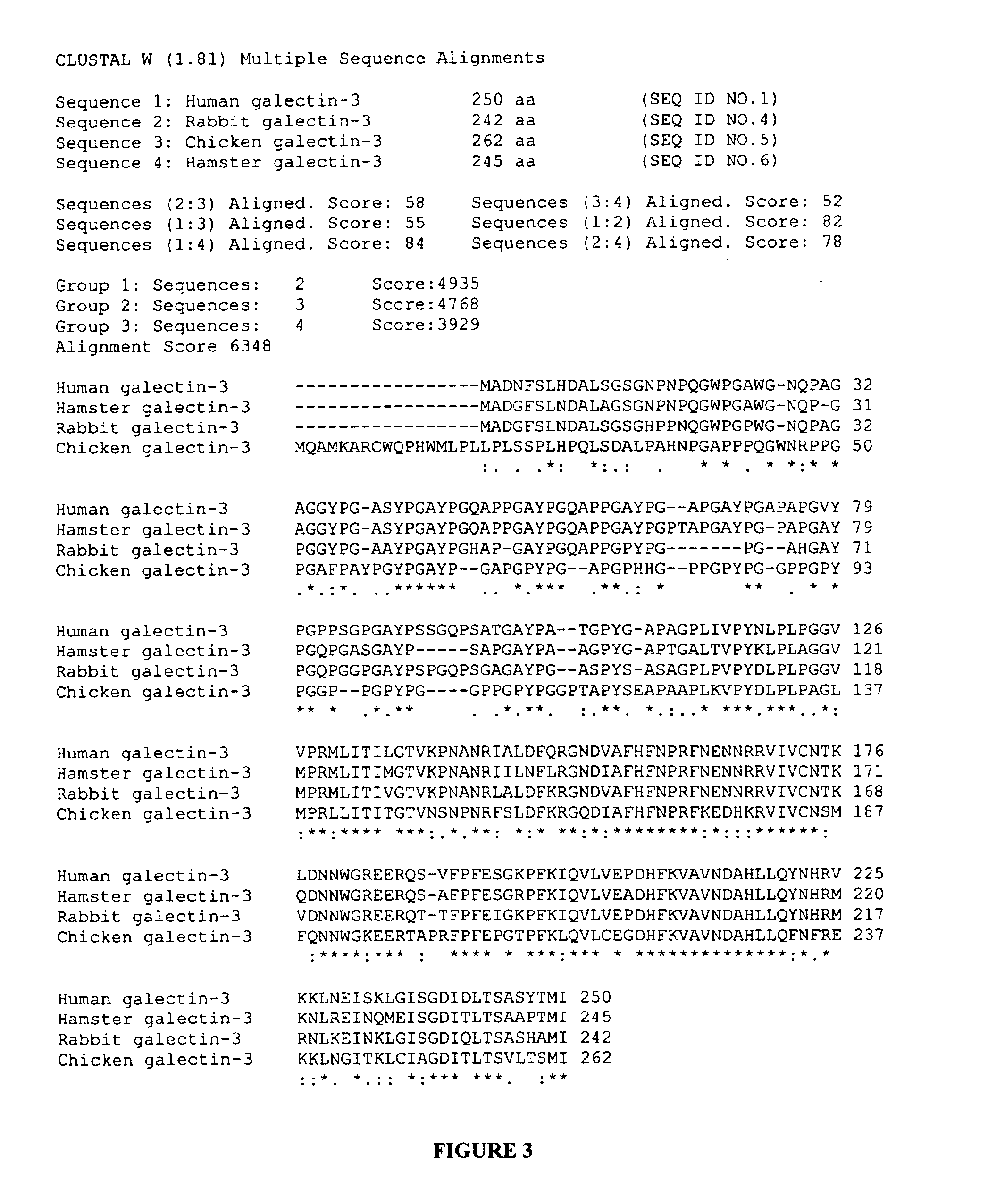Use of Galectin-3 to promote the re-epithelialization of wounds
a technology of reepithelialization and galectin, which is applied in the direction of antibacterial agents, peptide/protein ingredients, antibacterial agents, etc., can solve the problems of limited success in accelerating wound healing with pharmaceutical agents, persistent corneal epithelial defects carry a high risk of corneal perforation and ulceration, and serious medical problems of wound healing, so as to promote reepithelialization of wounds, promote the reepithelialization of wound
- Summary
- Abstract
- Description
- Claims
- Application Information
AI Technical Summary
Benefits of technology
Problems solved by technology
Method used
Image
Examples
example 1
Up-regulation of Galectin-3 in Migrating Corneal Epithelium Following Injury
[0078]To determine whether the expression level of galectin-3 is altered in the epithelium of healing corneas following injury, mice corneas with 2 mm excimer laser ablations and abrasion wounds, were allowed to partially heal in vivo and were then processed for immunostaining with rat anti-human galectin-3 mAb M3 / 38 (American Type Culture Collection, Rockville, Md.). Corneal epithelium is a prototype-stratified squamous epithelium. In mouse, it constitutes 20-25% of total corneal thickness and is composed of 5 to 6 layers of cells. Posterior to the epithelial basement membrane is corneal stroma, which in mouse represents 70-80% of the total corneal thickness. Abrasion wounds remove epithelium leaving the corneal stroma intact. In contrast, excimer laser treatment, which is commonly used for correction of myopia, removes epithelium as well as anterior corneal stroma.
[0079]Swiss Webster mice (Taconic Laborato...
example 2
Corneal Epithelial Wound Closure in Wild Type and Galectin-3 Deficient Mice
[0084]To determine whether the re-epithelialization of corneal wounds is impaired in galectin-3 deficient mice, four different models of corneal wound healing were used. Galectin-3 deficient mice (gal-3− / −) were generated by targeted interruption of the galectin-3 gene as described in Hsu et al., Am. J. Pathol. 156:1073, 2000. Specifically, the region coding for the CRD was interrupted with a neomycin resistant gene. This involved substituting a 0.5 kb intron 4-exon 5 segment with the antibiotic resistant gene (neo). That the galectin-3 gene has been inactivated was confirmed by Southern blot as well as Western blot analysis.
[0085]Briefly, corneas with excimer laser ablations (as described in Example 1) or alkali-burn wounds were allowed to partially heal in vivo or in vitro (as described in Example 1). For alkali injury, 2 mm filter discs (Whatman 50, Whatman International, Maidstone, UK) were prepared using...
example 3
Gene Expression Patterns in Migrating Corneal Epithelium of Galectin-3 Deficient Mice Following Injury
[0086]In an attempt to understand why the re-epithelialization of corneal epithelial wounds is perturbed in gal-3− / − mice, gene expression patterns of healing gal-3+ / + and gal-3− / − corneas were compared using cDNA microarays and the results were further confirmed by semiquantitative RT-PCR.
[0087]Transepithelial excimer laser ablations (2 mm diameter) were produced on the right eye of 30 gal+ / + and 30 gal− / − mice as described in Example 1. Corneas were allowed to partially heal in vivo for 20 to 24 hours. At the end of the healing period, animals were sacrificed and the corneas were excised and immediately placed in liquid nitrogen and shipped to Clontech Laboratories, Palo Alto, Calif. for analysis of gene expression using SMART™ cDNA technology. Briefly, total RNA was isolated using the reagents provided in the ATLAS™ Pure Total RNA Labeling System. Yield of RNA from the 30 gal-3+ / ...
PUM
| Property | Measurement | Unit |
|---|---|---|
| Fraction | aaaaa | aaaaa |
| Length | aaaaa | aaaaa |
| Therapeutic | aaaaa | aaaaa |
Abstract
Description
Claims
Application Information
 Login to View More
Login to View More - R&D
- Intellectual Property
- Life Sciences
- Materials
- Tech Scout
- Unparalleled Data Quality
- Higher Quality Content
- 60% Fewer Hallucinations
Browse by: Latest US Patents, China's latest patents, Technical Efficacy Thesaurus, Application Domain, Technology Topic, Popular Technical Reports.
© 2025 PatSnap. All rights reserved.Legal|Privacy policy|Modern Slavery Act Transparency Statement|Sitemap|About US| Contact US: help@patsnap.com



